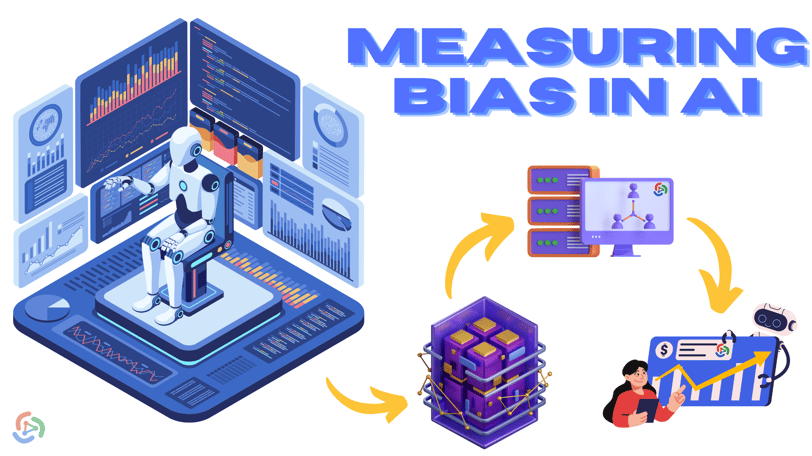Measuring the Bias in AI


The problem is that the quantification of bias in AI algorithms is not very easy. What this calls for is a multi-faceted approach through which statistical methods, fairness metrics, and continuous monitoring can be combined. Among the most common statistical methods identified are the N-Sigma approach, the method that could even make it possible to analyze the biases presented by machine learning models using methodologies traditionally used in general science, thereby offering the possibility of testing hypotheses and developing risk assessment frameworks based on bias analysis.
Another important set of tools for the quantification of bias is through fairness metrics. These metrics try to measure and identify outcomes produced by algorithms for the creation of a method that handles bias. Categories of fairness metrics include group fairness metrics; these measure fairness of outcomes between different demographic groups, while the other type, individual fairness metrics, requires similar treatment from the algorithm for similar individuals.
Some specialized bias-detecting tool and software is IBM Fairness 360, AI Fairness 360, and Aequitas. The former can identify and quantify a model's bias by using the visualizations to make the quantification of bias accessible in multiple ways: by using fairness metrics and statistical tests. They attempt to automate the measurement of disparate impact on marginalized groups, which is an imperative for decreasing bias.
Other open source packages that feature in the quantification of bias are Fairlearn, the AI Fairness 360 Toolkit, among many others. All these packages offer the automation measurement process and facilitate insight into the disparate impact experienced by the groups and further mitigate bias. Here, the packages with examples will demonstrate how to implement them in actual design against bias.
The tools and methods beyond these entail good knowledge of the kinds of biases that have an effect on algorithms of artificial intelligence. Ranging from data bias, confirmation bias, selection bias, automation bias, and algorithmic recidivism bias, to mention but a few, these are the kinds of tools and methods that stakeholders need in terms of comprehensive understanding by those taking a step forward to guarantee a concrete enumeration of bias.
Additionally, the data used in training AI algorithms must be diverse and representative of the population that it serves to not amplify societal biases and make sure that the AI system operates equitably for all demographics. After deployment, AI systems also must be monitored and evaluated to catch biases that may not have been obvious during testing.
In education and awareness alone, lies the ultimate round-way of stopping bias in AI. People involved in the creation, deployment, and utilization of AI have to be educated about their possible biases, outcomes, and prevention measures. Moreover, they will have to teach end-users the nature of potential bias that might occur along with the precautions required to get discrepancies that are bound to be reported in advance.
Last, but not the least, is interdisciplinary collaboration necessary to address the bias issue of AI. Collaboration among technologists, ethicists, sociologists, and legal experts is required in the designing and implementing of technical improvements, operational practices, and ethical standards that would guide the responsible development and deployment of AI. The outcome may lead to more robust solutions, taking into consideration the complexity of the issues regarding bias and fairness in AI.
One area where AI bias is quite pronounced is in many cases it reflects human prejudice, and perpetuates that as well. Some excellent examples in this category include:
Healthcare Algorithm In 2019, scientists arrived at an observation that an algorithm being used by several U.S. hospitals to determine which patients need more medical services was racist towards Whites. Such discrimination biased the hospital resources of prioritizing services to white patients while treating the blacks.
Hiring Tools: Amazon's AI recruiting tool was biased against women. The tool, trained on resumes submitted over a 10-year period, favored male candidates for technical roles because the training data was predominantly made up of male applicants.
Criminal Justice: COMPAS is a risk assessment tool used in the United States to predict whether a defendant is likely to reoffend. The studies by ProPublica showed that the COMPAS system discriminates against African-American defendants because it is more likely to err in labeling Black defendants as high-risk instead of white defendants.
Facial Recognition: Gender Shades by Joy Buolamwini tested commercial AI-based gender classification systems and uncovered disparities in accuracy. These systems classify male and lighter-skinned faces significantly more accurately. The bias reflects the training data
In other words, measuring and quantifying bias in AI algorithms is a tough but necessary job. It is accomplished with statistical techniques, fairness measures, dedicated instruments, and in-depth knowledge regarding the nature of biases that exist in AI systems. These techniques and instruments, if applied suitably, under constant surveillance of AI systems, education for stakeholders, and facilitating interdisciplinary collaborations would contribute to creating fair, just, and thereby useful AI systems for all the members of society. The constant quest to detect and minimize biases in AI speaks of the difficulty of the work and the vigilance required to be achieved by all parties concerned with the development and use of AI. It would aim to include the power of AI for society's use, yet avoid the sustenance of imbalances and injustices which it may cause.
References:
